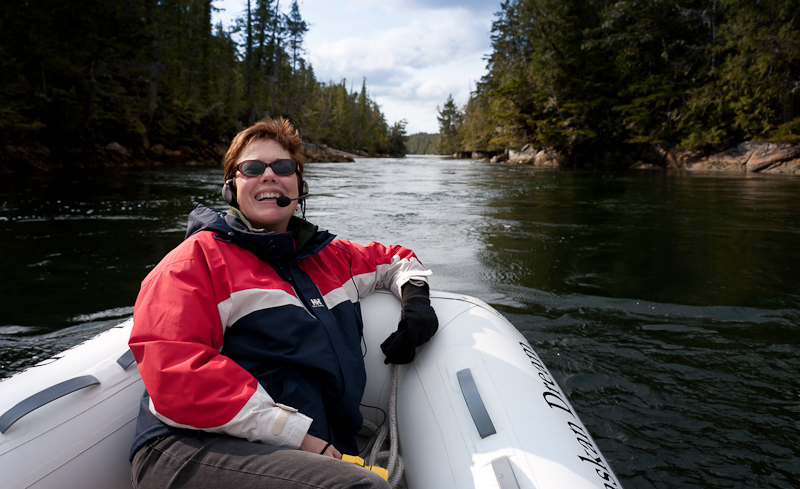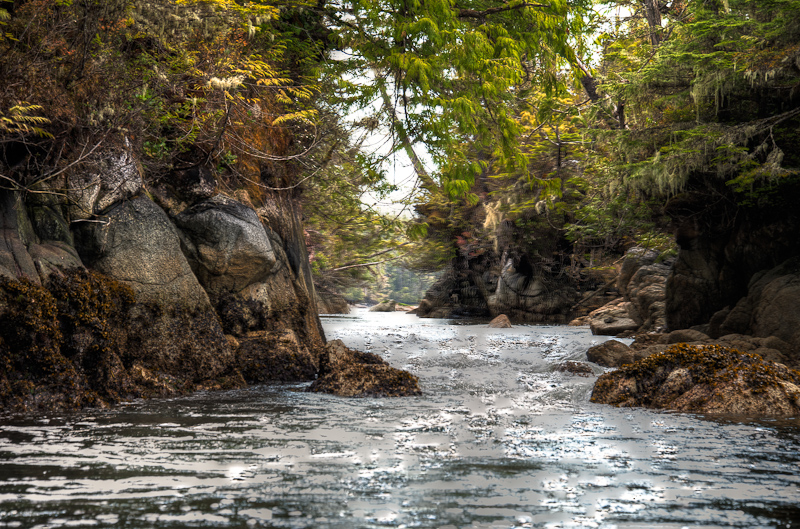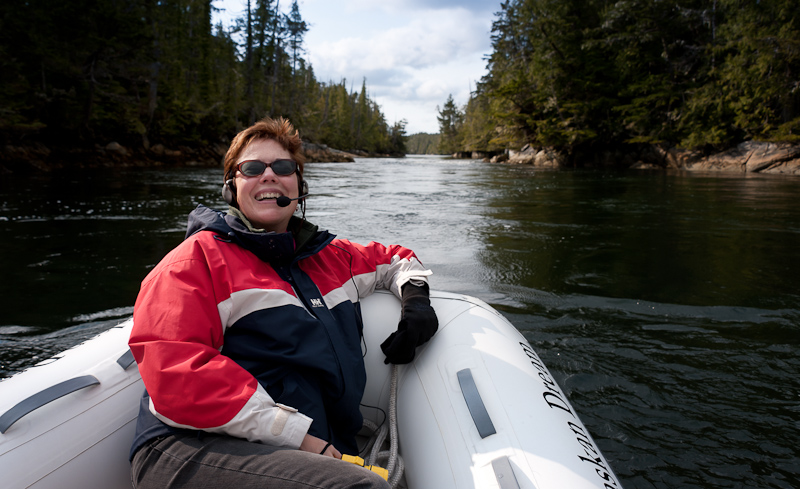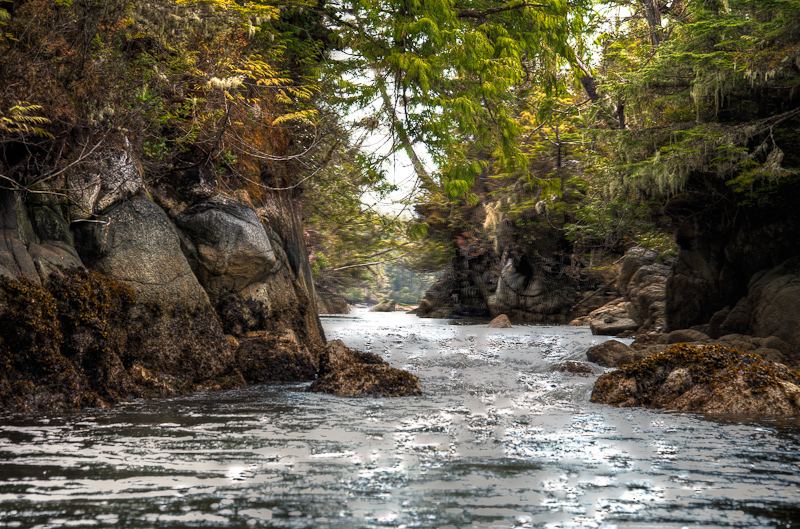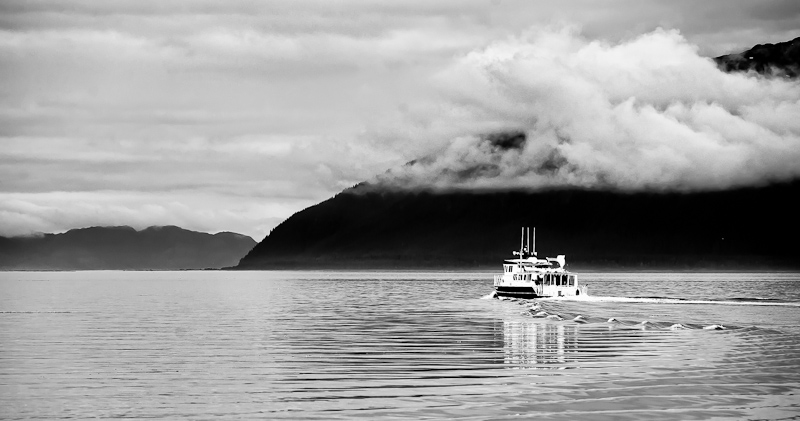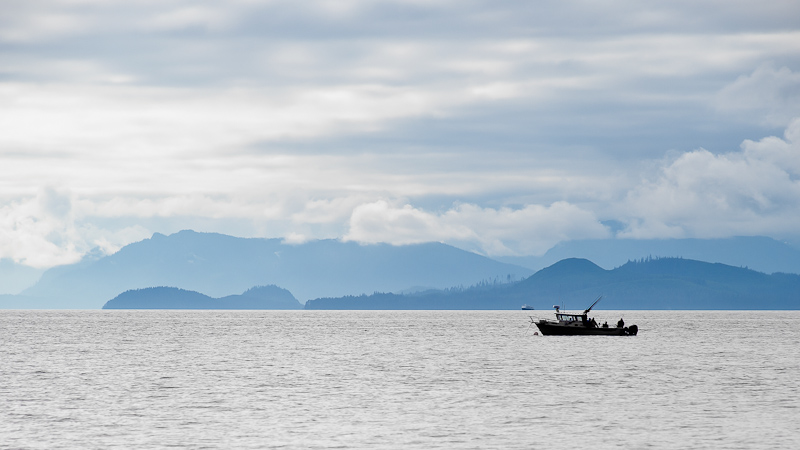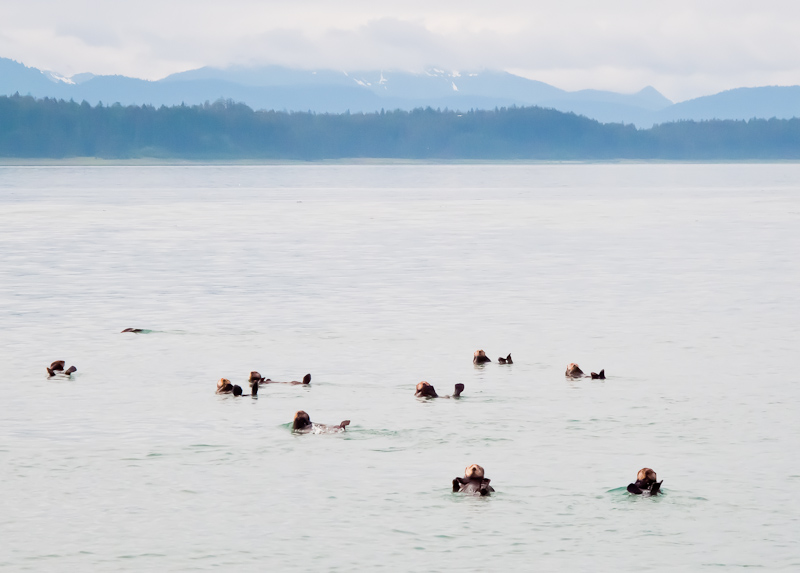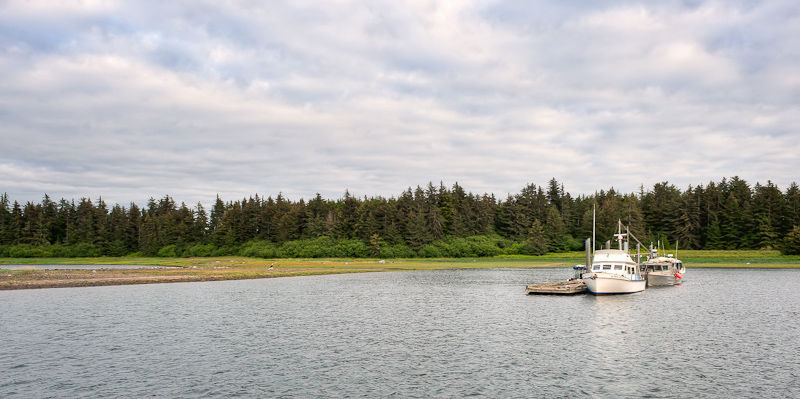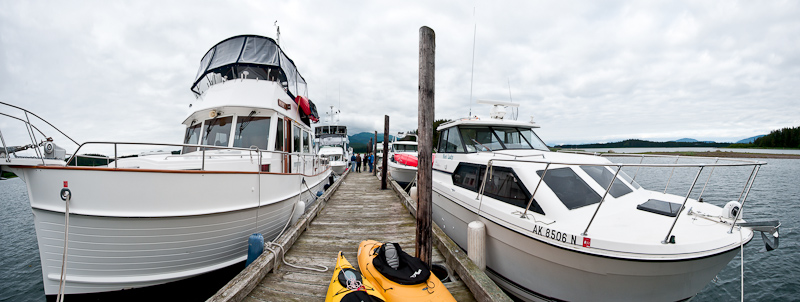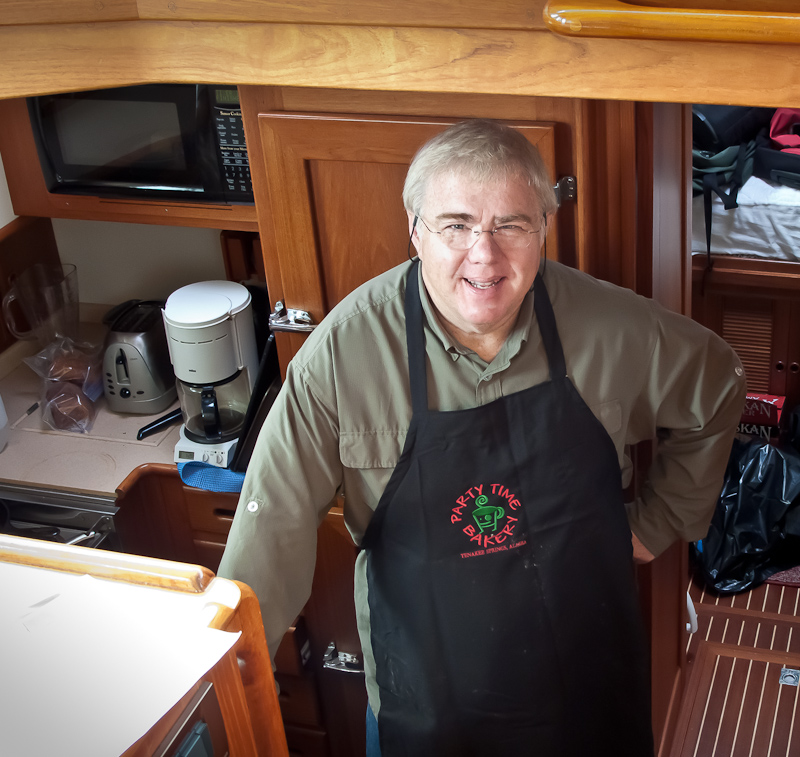Reid Inlet provided us with a most welcome peaceful night, and we caught up on some of the sleep we lost in Blue Mouse Cove.
In the morning, we watched the crews of Northwest Explorations’ Mother Goose fleet get underway. I called the lead ship Deception and offered to take some photos of her with the glacier in the background. As the Grand Banks came abeam Arctic Star,the captain chose to make a disparaging comment on my attire; I was still in my “jammies.” His mistake. As they passed I lowered my camera, turned around and mooned the crew. Not exactly how they expected to start their day.
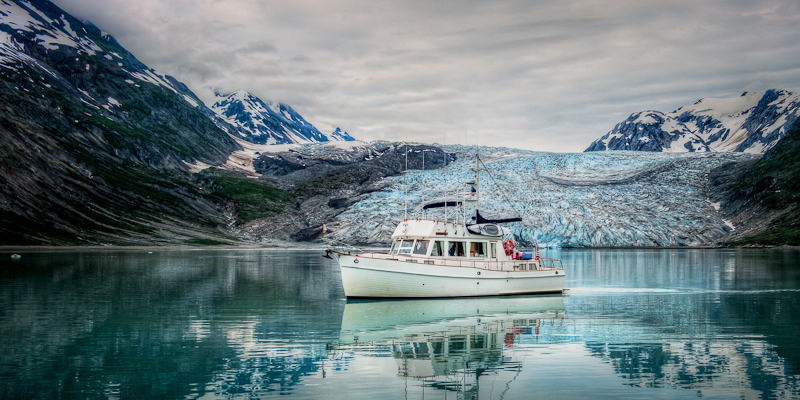
Deception departs Reid Inlet after being "mooned"
One of the big cruise ships (only 2 allowed in per day) passed Reid Inlet on their way north to see the other glaciers. Shortly thereafter a second big cruise ship headed up the same way. We did some calculations and decided to have breakfast before we set off for the same destination. We hoped they would be leaving as we arrived. For the past week, Karen had been watching the weather in hopes of timing our day at the glaciers so that we had the best weather of the week; sunshine was in our hopes. Her calculations and prayers worked. It was a beautiful morning. There were clouds in the area, but where we were, the sun came out and started to dominate the view.
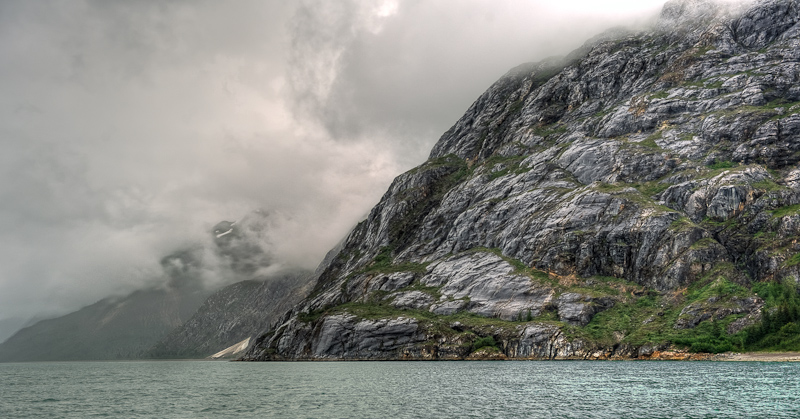
Granite and clouds define the landscape...until the sun comes out
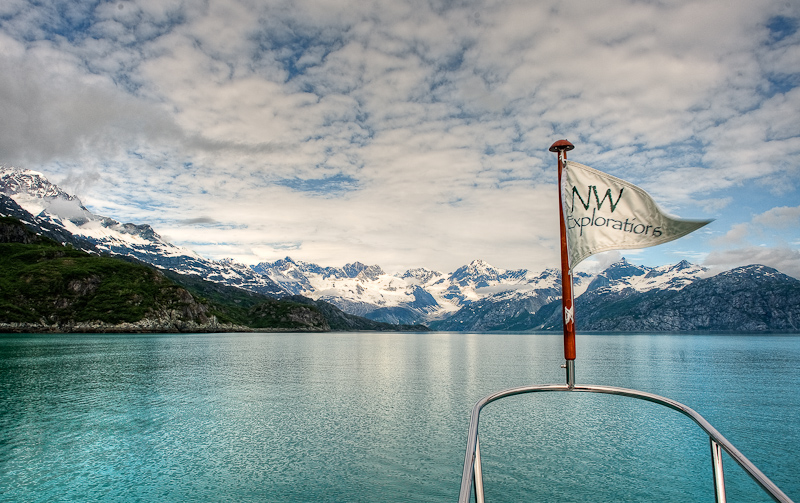
When the clouds retreat, the mountains advance
We left Reid Inlet with a final farewell to this cool glacier and lovely anchorage. The anchor came up covered in thin, sticky glacier silt. Karen had her hands full getting it clean. We decided to head to Lamplugh Glacier first and take a look down Johns Hopkins Inlet (closed to motorized vehicles at the present time) before heading up Tarr Inlet to the Margerie and Grand Pacific Glaciers.
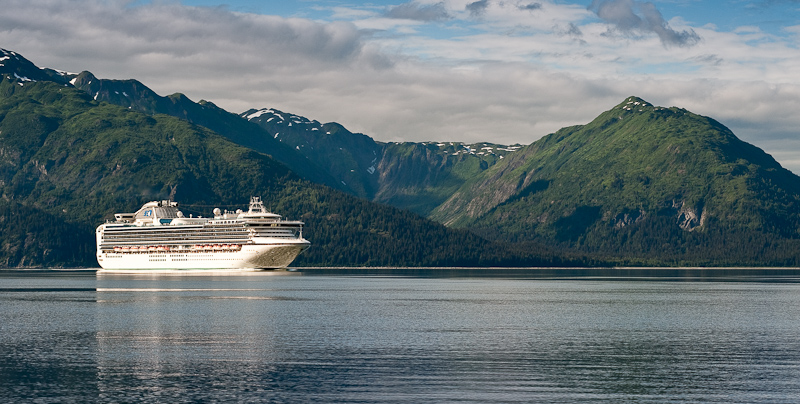
The Coral Princess makes its way from glacier to glacier
As we neared Lamplugh, we saw one of the large cruise ships coming out. I called him on VHF 13 to learn his intentions and set up a port to port pass. This was the Coral Princess, heading from Lamplugh up to Tarr Inlet, and she would be no factor for us. We thought we’d have this area all to ourselves when we heard the 2nd cruise ship call the Coral Princessand arrange a port to port pass as well in Tarr Inlet. That told us that the 2nd cruise ship was likely to be coming into our view shortly.
We spent some time at Lamplugh Glacier, drifting in front of it and snapping away with the cameras. It was so sunny and bright, and the glacier was quite attractive with some snow covered hills in the background. Shortly thereafter, the Norwegian Pearl poked her nose around the corner on the far shore from where we were. I spoke with the captain about his intentions, and we arranged it so that he would follow the far shore to Jaw Point, hover there to afford his passengers a great view, and then we’d kind of trade places. We enjoyed watching him maneuver, and we suspect that many of the passengers took photos of our boat. We were lazing about at idle, with Karen lying in the sun on the bow, one head on a fender as a cushion. Pretty nice.
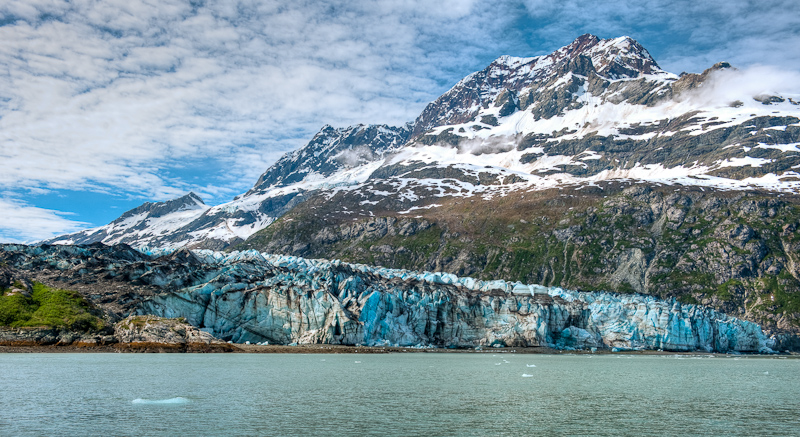
Lamplugh Glacier's blue is striking against the granite grey and snow white mountains
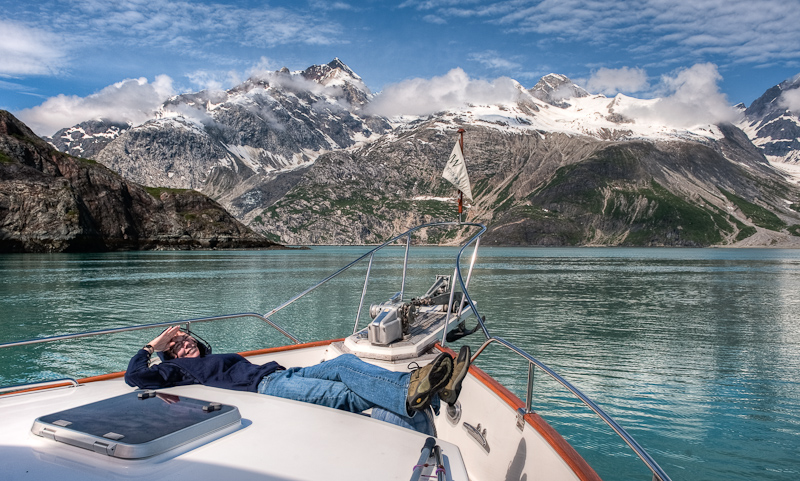
Waiting for the cruise ship to move on so we can get a good view of the Johns Hopkins glacier
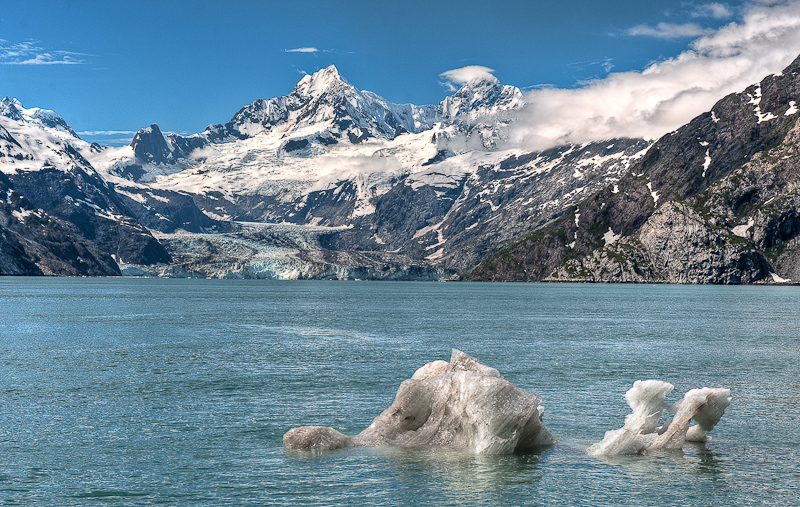
The Johns Hopkins Glacier and its surrounds
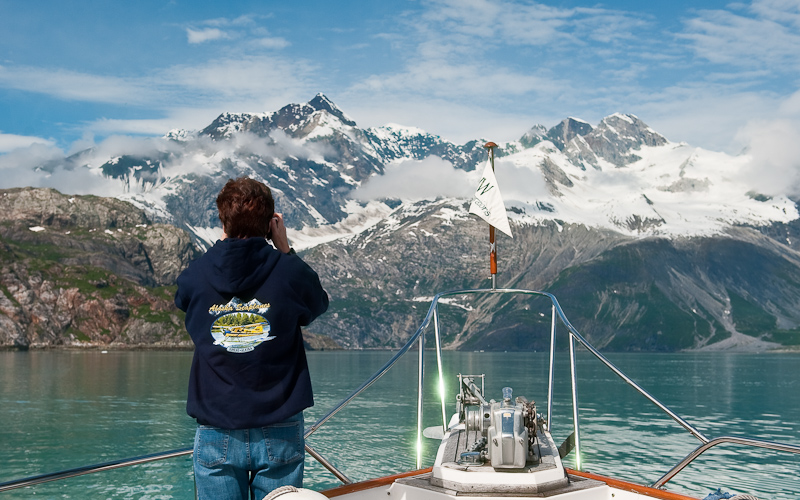
It's hard to resist taking lots of pictures around here
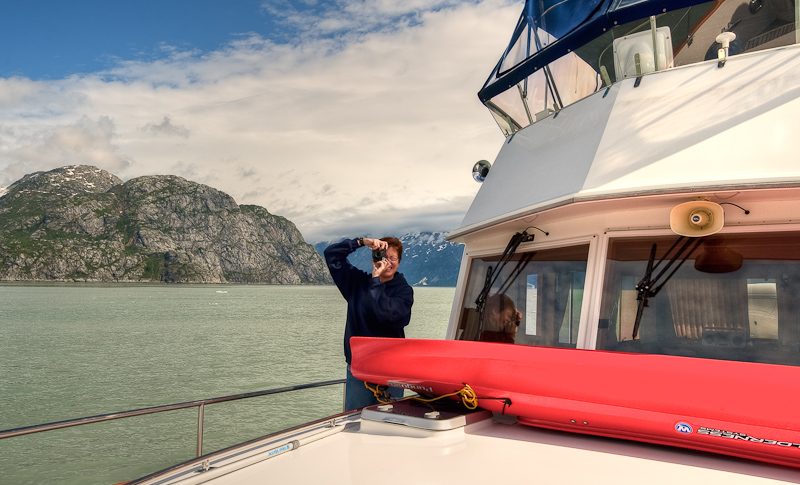
Caught you!
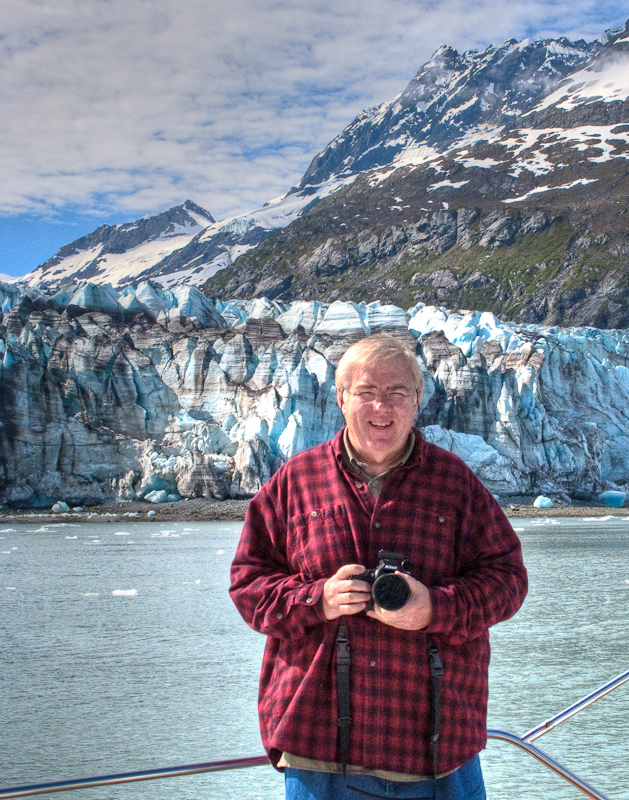
You too!
What was even nicer was the view down Johns Hopkins. Wow…it looked like the Matterhorn in the background with a lovely glacier spilling down to the sea. We took lots of pictures before heading north up Tarr Inlet. As we headed North, we passed the Coral Princess again (she was southbound now) and a small pocket cruiser…and then we had the two glaciers all to ourselves for the entire 2 hours or so we hung out there.
The Grand Pacific Glacier at the head of Tarr Inlet is massive at over 34 miles in length and 2 miles wide at its face. However, the face looks like a big pile of dirt; not very photogenic. really unattractive and extremely dirty…it looks like a dirty wall rather than a glacier. Only from a distance can you see the ice “road” of the glacier.

The Grand Pacific Glacier has a very dirty face
Luckily for us, the Margerie Glacier was just off to port, and this was the glacier Karen noted was the primary photo opportunity. It is much more of what you expect in a glacier. White with glacier blue and a sheer face that calves and launch bergie bits into the water with a resounded retort.

Margerie Glacier is the most photogenic of the lot
It was gorgeous, a pretty blue with big spires of ice. We worked our way through all the bergie bits to get close enough for photos and we drifted for a long while, watching the glacier, taking photos and watching some calving. We also noticed that the sun was deciding to go away, and clouds were moving in, especially back down the way we had to depart.
One of the nice features of the glaciers in Glacier Bay is that the approached as not typically clogged with ice. It is not difficult to approach and most of the ice is small and widely spaced. You can do all the glacier watching you want here and never leave and of your hull paint or gel coat behind.
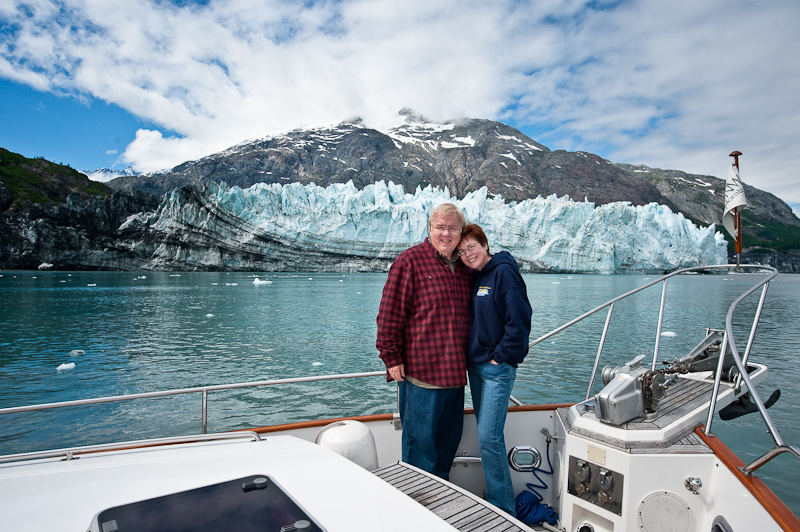
Not hard to understand why we do this, is it?
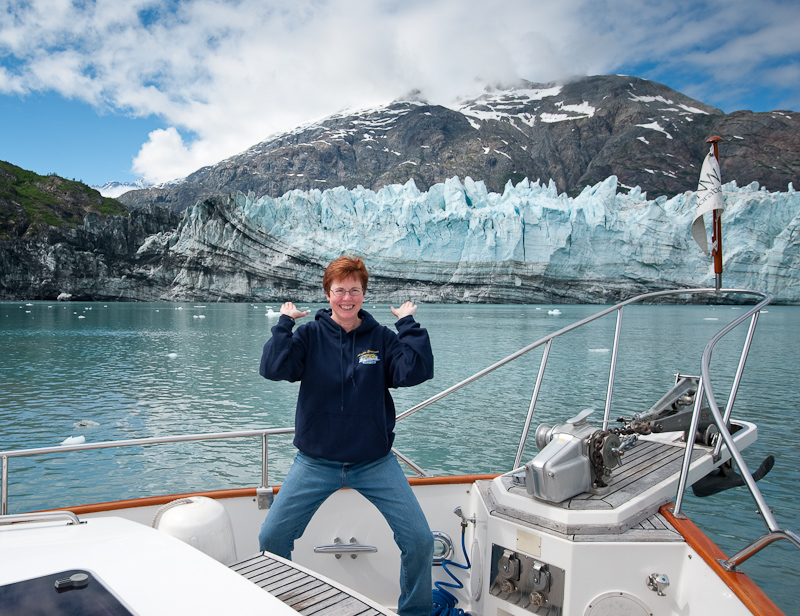
Karen must have had too much sun today. She's getting goofy.
So around 2, we headed southbound to check out a possibly anchorage at Russell Island, not far from Reid Inlet where we had spent the prior evening. A quick check showed that this was “OK” but not super, and so we decided that we might as well head south to North Sandy Cove. This would allow us to get well south of Blue Mouse Cove, and should also provide some bear watching opportunities. There wasn’t much wind, so the southbound travel was quite pleasant rather than slamming into the wind and seas as we had seen other boats do earlier in the week.
About 7:30 or so we arrived at North Sandy, to find not only our Mother Goose friends, but two other boats. We saw a black bear ashore as we checked out anchorages, and finally dropped anchor in about 35’ of water at high tide. We chatted briefly via VHF with Brian on Deception, and watched some of the dinghy activity going on around us while we had a late dinner and a great bottle of wine. We settled in for a quite night with plans to explore the cove in the morning before heading south to Bartlett Cove.
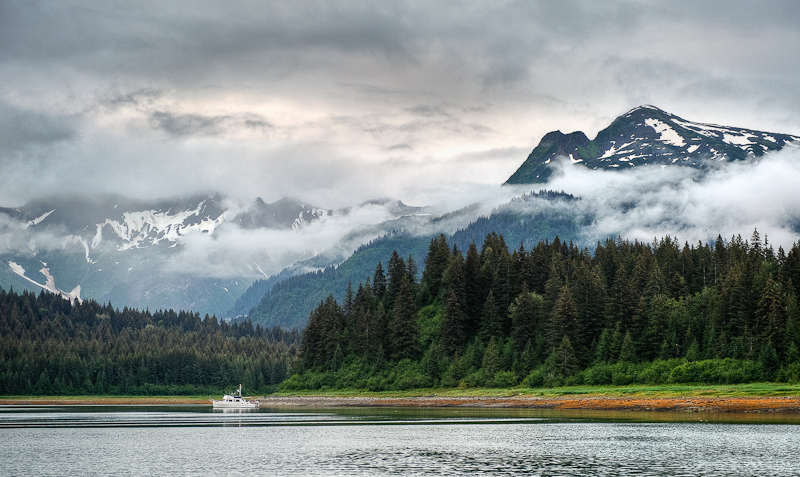
North Sandy Cove has a lot to recommend it, including the views
